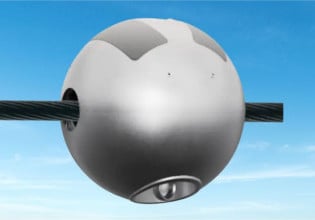With weather forecasts indicating the intensity of El Niño-driven storms will be strong this winter in California, PG&E has been getting ready – for the past 18 years. The last major El Niño storm season in 1997-1998 dumped twice the normal rainfall on San Francisco, created widespread flooding and caused power outages impacting more than a million customers. PG&E has been preparing for storms like those by practicing for extreme-weather events and natural disasters; using advanced meteorology tools to forecast where storm impacts will be most significant; and adding innovative technology to its electrical grid.
New technology includes the use of storm outage prediction models, the installation of automated equipment that “self-heals†the electric grid as well as timely and accurate outage data from its network of more than 5 million electric SmartMeters™. In addition, the increasingly smart grid means outages can be detected almost instantaneously and restoration, in many cases, can be done automatically.
“A combination of preparedness, practice and technology has PG&E ready to respond to winter storms. We put our focus on public safety and on efficiently responding to customer outages,†said Barry Anderson, PG&E’s vice president of Emergency Preparedness and Operations.
“With these advanced forecasting and outage-prediction tools, we can work with our electric crews to make sure we have the right numbers of people, vehicles and equipment in the right place at the right time as storms hit,†said Mike Voss, PG&E’s principal meteorologist.
These advances include: SmartMeters: SmartMeters play an important role in PG&E's response to power outages. The utility receives SmartMeter data within seconds of an outage to help system operators quickly determine the scope and level of response needed. They also help identify the location of an outage to reduce the amount of time it takes for restoration crews to arrive on scene.
Smart Grid: PG&E has installed advanced automated technology on power lines throughout its service area. This technology can automatically "self-heal" the grid by re-routing the flow of electricity around a damaged power line and effectively restoring power to the majority of impacted customers within minutes. These systems have been installed on nearly 20 percent of PG&E's electrical distribution circuits and have helped the company avoid almost 89 million customer outage minutes since the program began in 2012.
New Distribution Control Centers: Two new state-of-the-art electric distribution control centers help manage PG&E’s more than 140,000 circuit miles of distribution lines throughout Northern and Central California. These facilities are the nerve centers of the grid that delivers energy to individual homes and businesses. They are equipped with systems that support not only today's current smart grid technology, but will also support future upgrades as well. The centers in Fresno and Concord will be joined by a third facility in Rocklin early in 2016.
Emergency Preparation: PG&E now has an entire department, led by Anderson, dedicated to preparing and responding to emergencies and natural disasters. Through repeated exercises and thorough self-reviews that seek constant improvement, the company’s Emergency Preparedness and Operations team helps coordinate all-hands-on-deck responses to events such as the 2014 Napa earthquake and the 2015 September wildfires, including working closely with first-responders. And Advanced Meteorology: New technology and storm outage prediction modeling is helping PG&E pinpoint where problems might occur as storms arrive and progress through PG&E’s service area.






